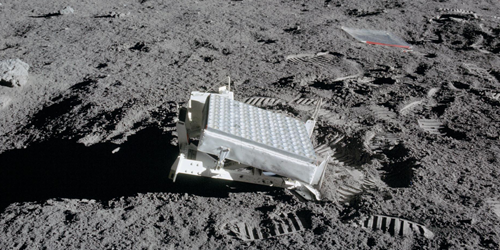Confirming Gravitational Interactions are Equal and Opposite
Which weighs more: a ton of iron or a ton of aluminum? This question might sound like the popular “gotcha” involving bricks and feathers, but for Vishwa Vijay Singh, a recent PhD graduate from Leibniz University Hannover, Germany, it’s more than just a riddle. Using high-precision measurements of the Earth–Moon distance, Singh and his colleagues have tested the idea that the strength of gravity felt by an object depends on the object’s composition as well as its mass [1]. Their null result constrains the size of such an effect 100 times more tightly than previous studies.
According to some models of gravity, an object’s inertial mass and its gravitational mass can differ (see Viewpoint: Satellite Confirms the Principle of Falling). Certain models take that idea further, subdividing the latter category and predicting that an object’s “active” gravitational mass (the property that generates a gravitational field) can differ from its “passive” gravitational mass (the property that determines how strongly the object responds to gravity).
In 1987, scientists searched for such a disparity using the lunar laser ranging (LLR) experiment. The Moon’s iron-rich maria and its aluminum-rich highlands are distributed asymmetrically, offsetting the Moon’s center of mass from its geometrical center. Models that subdivide gravitational mass predict that the exact offset depends on the active-to-passive gravitational-mass ratios for iron and aluminum. A large enough discrepancy between these ratios should be detectable using precise measurements of the Moon’s orbit. The 1987 study found no such discrepancy. Now Singh and colleagues’ updated investigation—which involved more data points and a more sophisticated analysis—reproduces that result with greater confidence. Additions to the LLR experiment by future Moon missions could tighten the constraints even further.
–Marric Stephens
Marric Stephens is a Corresponding Editor for Physics Magazine based in Bristol, UK.
References
- V. V. Singh et al., “Equivalence of active and passive gravitational mass tested with lunar laser ranging,” Phys. Rev. Lett. 131, 021401 (2023).




